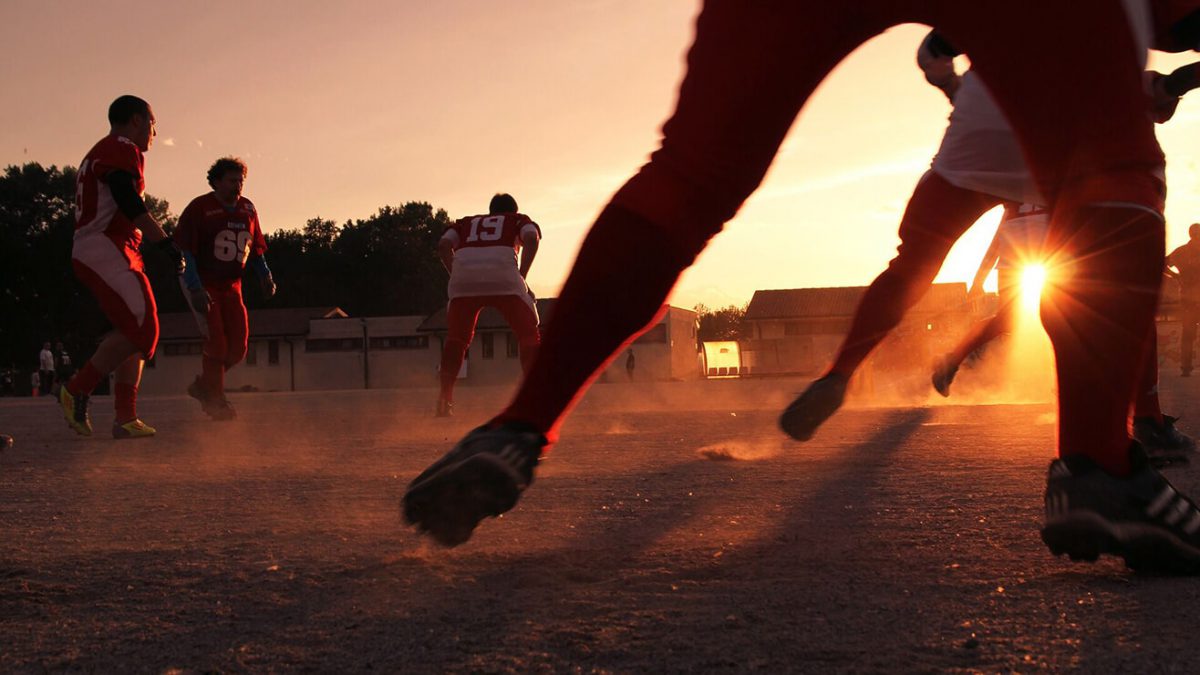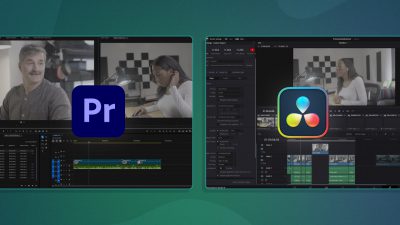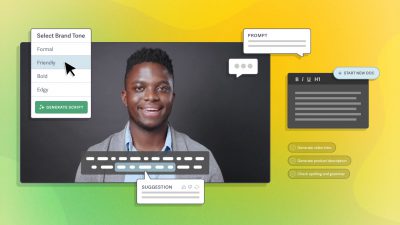Whether you watched the Olympics or not, one thing is clear: people are getting better and better at sports. One of the most effective (legal) tools being used to enhance performance is video, and the ways in which it’s being leveraged for athletes inspired us to explore how the same ideas could be applied to video marketing.
From performance analysis, to teaching assistance, let’s take a look at video can be used to unleash an athlete’s potential, and the lessons we can put into practice off the field.
Total Recall
Sports players frequently have to learn and perfect new moves on an ongoing basis, from footballers, to gymnasts, to synchronized swimmers. The same is true for your website visitors, especially if you are launching new features, or changing a specific workflow.
Make a video detailing what’s new, and how your audience can best use it to their advantage. Using visuals rather than text can boost learning and retention significantly, making it more likely your users will change their behavior.
Remote Training
We live in a world where distance doesn’t have to be a barrier to, well, anything. When it comes to sports training, athletes at every level need to ensure that they are doing all the right things to maintain their optimal fitness level. Video enables coaches from all over the world to demonstrate techniques and share tips. Meanwhile, athletes can record themselves training so the coach can quickly remedy any errors.
Not only can you use video to facilitate remote training within your company, but you can also use it to connect with subject matter experts for interviews, panel discussions, and more. That type of content can be repurposed in many ways, such as in support of a white paper or as email-gated content for lead generation.
Recording the Athlete’s Own Perspective
When the sportsperson is out there on the field, they’re on their own. Even if they’re a member of a team, as an individual, their performance must be faultless, especially when they’re under pressure. But, it can be hard to explain why a snap judgment decision was made after the final whistle is blown.
By using video recording technology like a GoPro, athletes can record themselves and re-watch the video for instant feedback on their performance. They can see where they did well, and where they need to focus attention.
You can bring that behind-the-scenes approach within your organization, literally with a GoPro, or just with a regular camera. This could help with recruiting, connecting with far-flung teams, or celebrating a departmental victory of some kind.
Tip Top Technique
Whatever sport an athlete plays, their technique has to be nearly perfect to enable them to progress and play to their full potential. Creating a solid foundation with strong technical skills is especially important for those who are at the beginning of their career. It is far easier to correct mistakes before they become ingrained. Using video, athletes and their coaches can closely watch the mechanics of movement and concentrate on developing the right posture, form, and motion to take them to the next level.
For video marketers, rehearsing a pitch or a speech on video is a great way to ensure you’re at the top of your game before you present your material in front of any third parties. Pretend you’re talking directly to your targeted audience, and work through all of your talking points. Then, force yourself to watch your performance, and listen critically for any weak points or areas that need improvement. This process might be painful, but it’s better to catch any issues well before you take your content live.
Preventing Further Injury
Athletes who injure a specific part of their body are more likely to hurt that part of their body again. Video technology enables coaches, physiotherapists and surgeons to see precisely how athletes use their body. They can watch the athletes’ movements and see the stresses they are placing on the joints and muscles. The motions that cause the injury can be modified and recurrent injury stopped.
A less fun side to video marketing can be managing a brand during a crisis. Maybe your company had to recall some products, got on the wrong side of a Tweet storm, or misstated important numbers. No matter what the problem is, issuing a video as a statement reassuring your customers about the steps being taken to prevent any further problems can go a long way to restoring trust and confidence in your brand.
As anyone who has ever received a strongly worded email or text can attest, the written word doesn’t have the same emotional content as hearing or seeing how someone says the exact same thing, which is part of why video is so important for a brand in crisis.
Competitive Analysis
Athletes need to be aware of the competition as well as their own performance. Thanks to video, they can now see clearly where the competition is going to score points, so they can factor this information into their own strategy.
Make a point of watching your competitors’ videos on social media and Youtube to learn about their messaging and upcoming product releases. Consider how they are angling for your target customers, and think strategically about how best to counter their value propositions with your own. We’d never advocate for copying or emulating what your competitors are doing, but understanding their game is a big part of staying ahead.
Ready Replay
Match officials can make mistakes, errors that can have career-changing impacts on the players. Thanks to video, the current system of instant replay has been a feature of the NFL since 1999. In addition to reviewing play, instant replay can be used by players’ doctors and trainers to ascertain how an injury happened, especially in relation to injuries such as concussion where the player is unable to give an accurate account.
Instant replay is a great tool to use for recorded events that you then post online for attendees, or those not present when it unfolded live, to watch at a later date. Think of conferences, panel discussions, expert interviews, or day-in-the-life coverage of what it’s like to work at your company. Publishing your video online for further viewing helps get maximum value out of your content.
Promote Perfect Performances
From athletes at school looking to get their name in front of coaches for a college sports scholarship, to semi-professional athletes wishing to take their career to the next level, video gets sportspeople noticed. Record a great performance and an interview where they share their aspirations, and promote it online or email it to the intended viewer – it’s easy. Video brings their achievements to the attention of the right people.
Similarly, video is one of the best tools in your arsenal for driving thought leadership – the non-athletic equivalent of being the best in your field. Interviewing your company’s leadership in a subject matter expert series can help showcase why you’re at the forefront of your market, or why a new product will be so ground-breaking by highlighting the expertise that went into it.
Recap
Even if you haven’t set foot on an athletic field for a decade and your swimsuit is stashed in the back of your closet, the ways in which athletes use video can be meaningful for you too:
- Use video to educate your users about a new workflow or product feature to take advantage of the boost it gives to retention and learning.
- Don’t let distance hold you back – use video to facilitate intra-company training, and to connect with subject matter experts to generate valuable, multi-purpose content.
- GoPro is an effective way of recording a behind-the-scenes video. Use a GoPro to show others what happens in your office or during a Town Hall.
- Use video to record your performance during public speaking engagements and re-watch to see where you can improve.
- Mitigate damage during a brand crisis by leveraging video for important communications to bolster confidence and trust in your brand.
- Study how your competitors are using video to improve your market intelligence and to keep ahead of the game.
- Instant replay is used to improve accuracy, or to keep the buzz going after an event, whether it happened online or offline.
- Just as athletes promote themselves to coaches or to local companies for sponsorship deals, you can use it just as effectively to establish thought leadership within a given domain.
Video has so many uses, both on and off the field. Have you developed any interesting or unusual ways to use video in your area of expertise? Share below or on Twitter!








